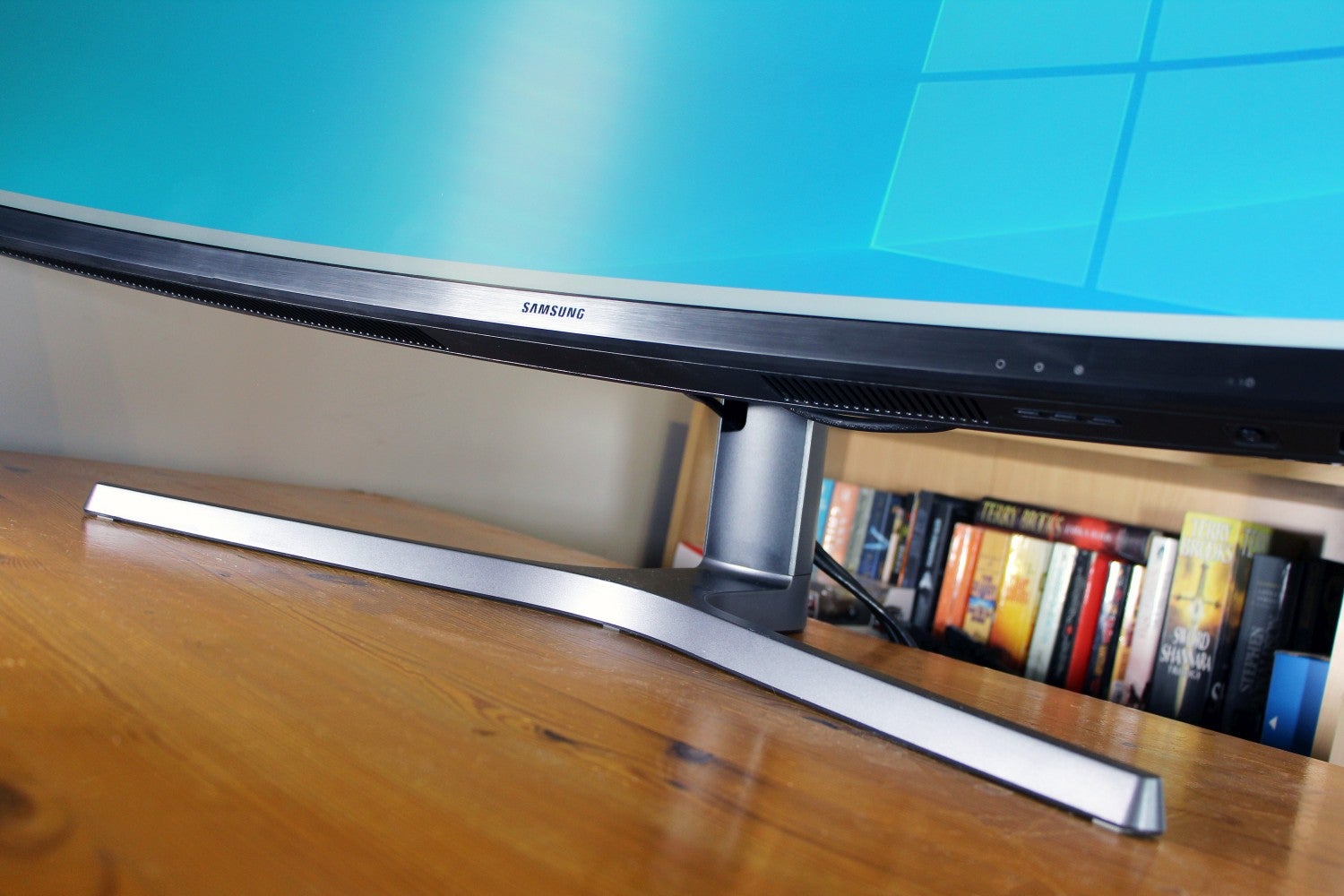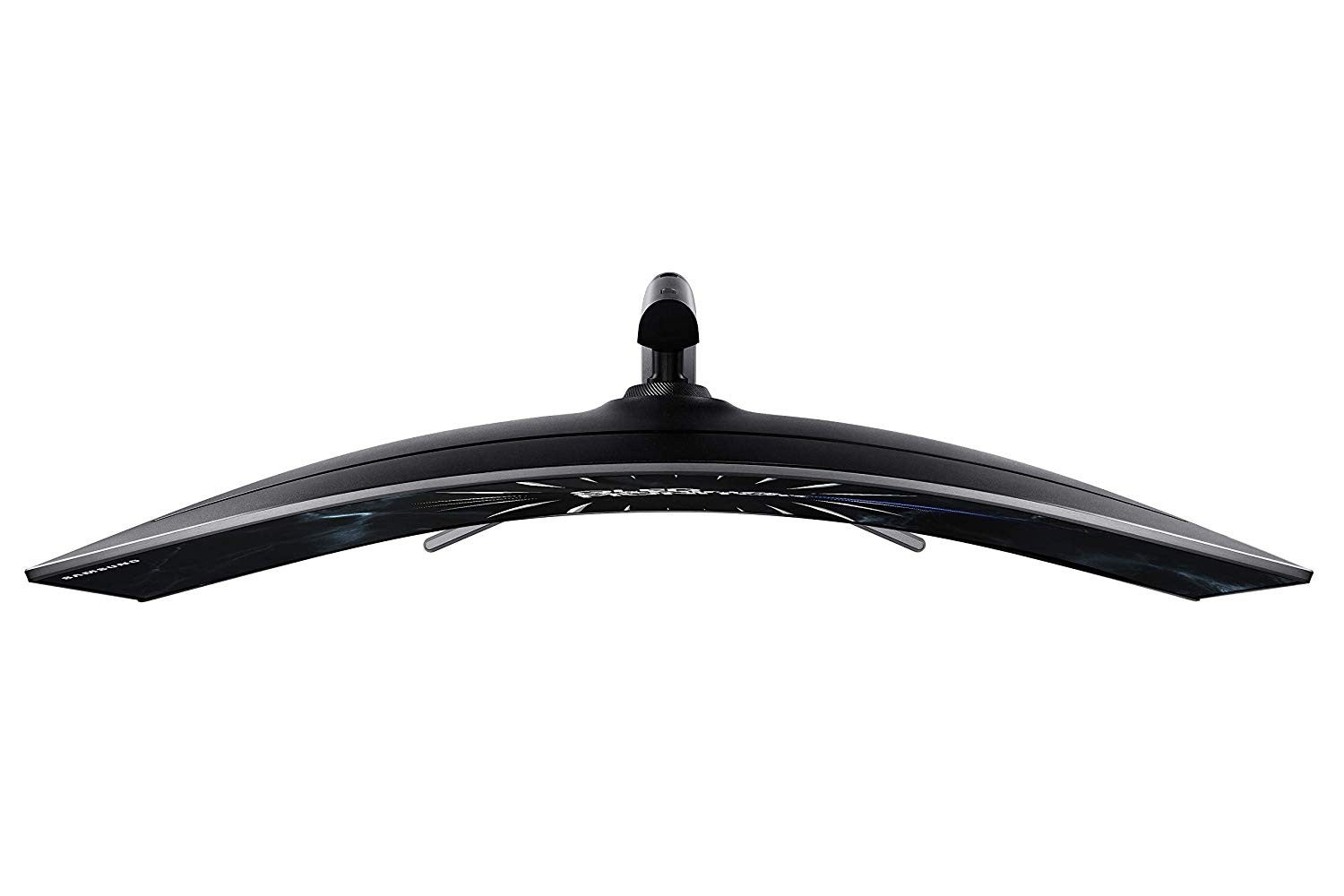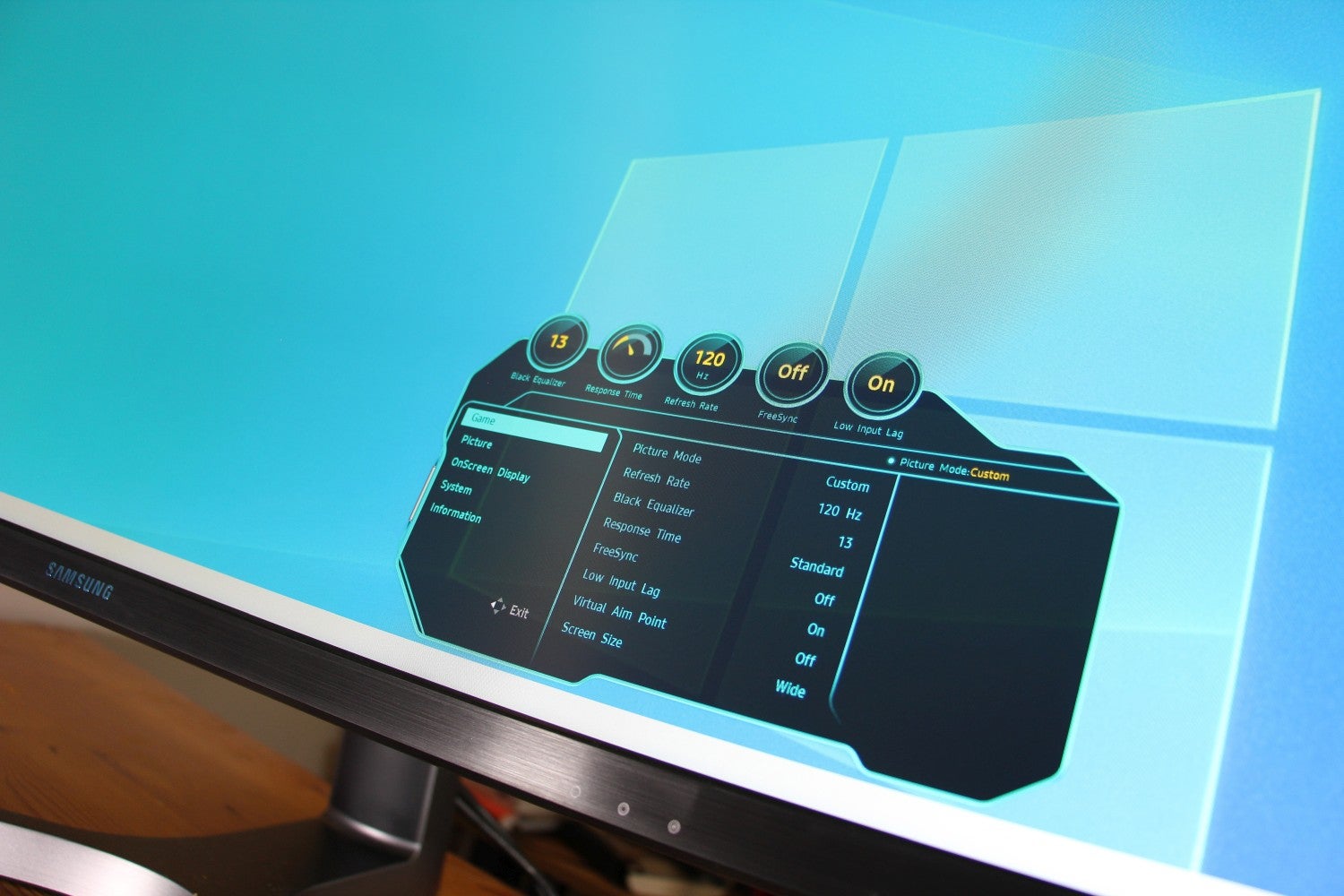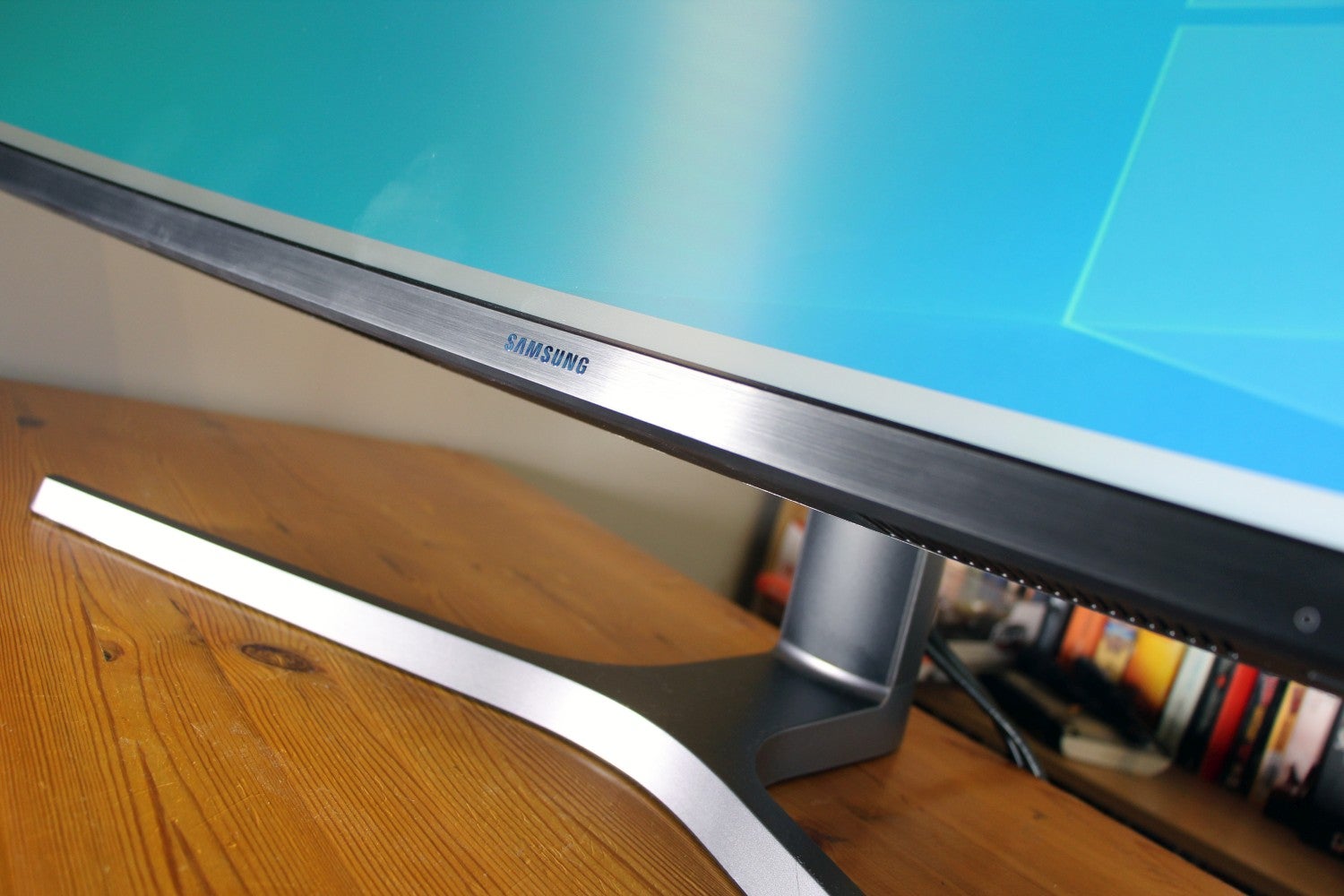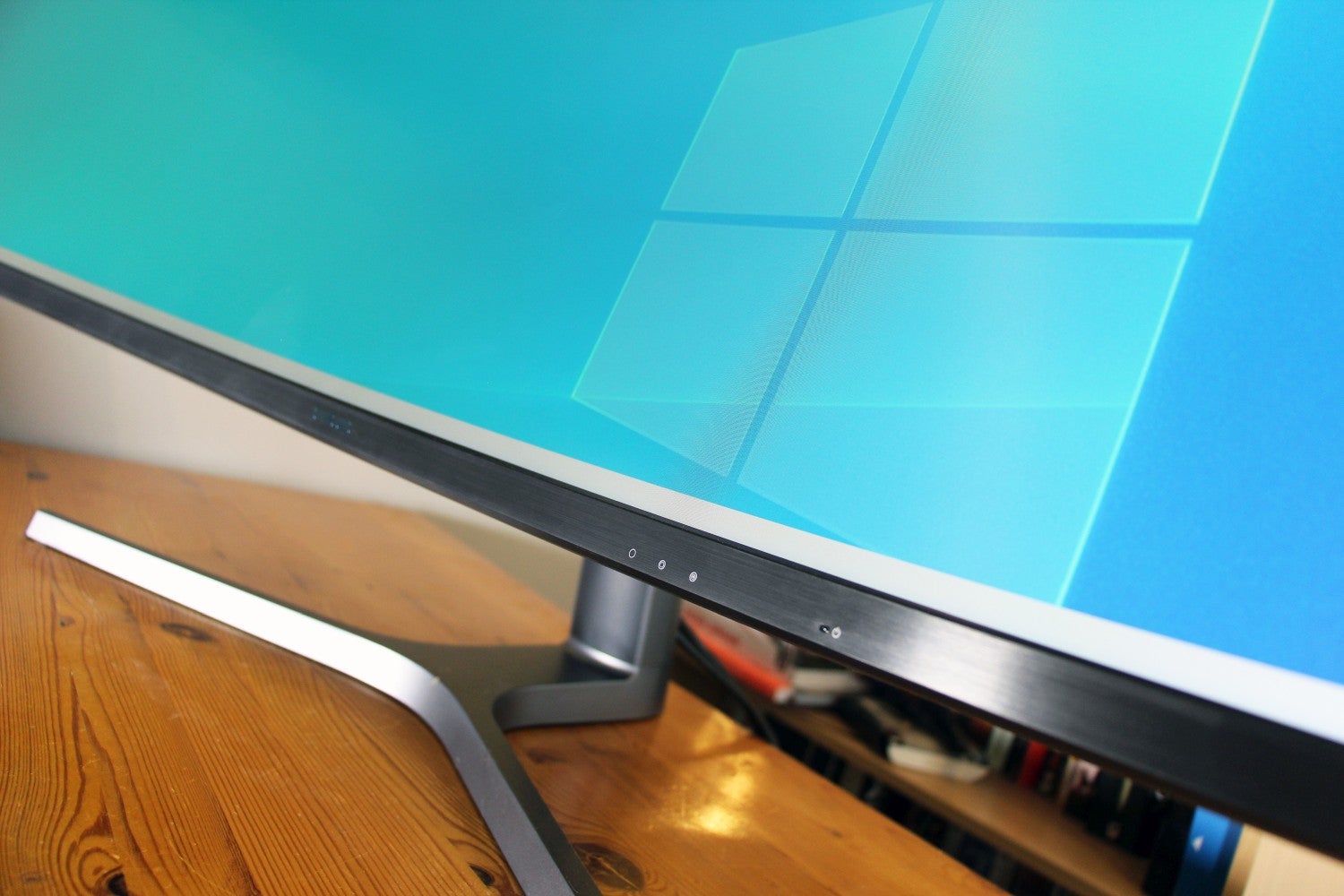Samsung CRG90 (C49RG90) Review
Samsung CRG90 (C49RG90) Review
The Samsung CRG90 isn’t the first widescreen monitor I’ve seen, but it may be the one with the best set of features – this panel has a vast resolution, AMD FreeSync 2 and VESA DisplayHDR 1000. It’s an exciting slate of specifications, and Samsung says that this panel can be used for work and play […]
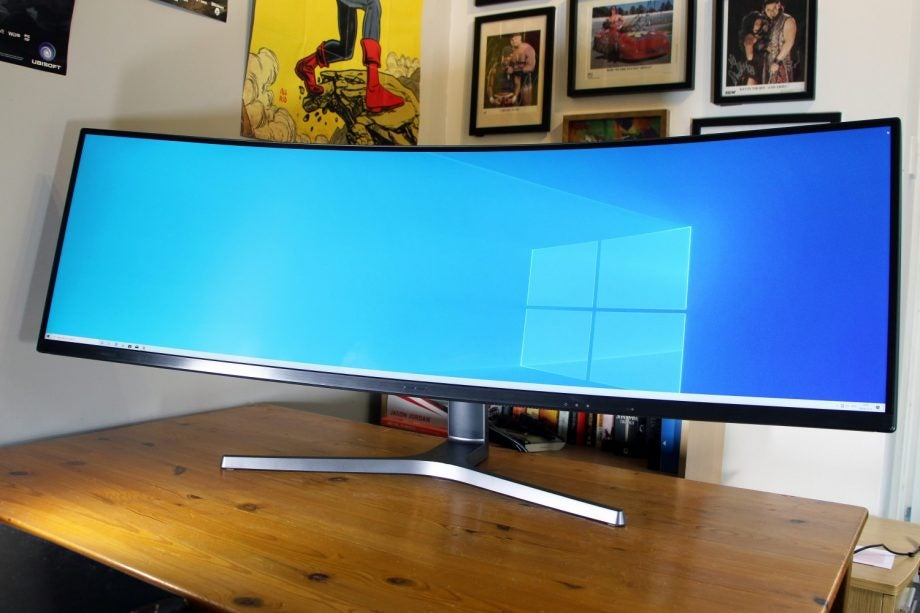
Verdict
Stunning quality, impressive HDR and loads of features. It's the best widescreen around – but you'll need to fork out for it.
Pros
- Stunning screen quality
- Excellent HDR performance
- Solid physical design
- Huge resolution
- Fast, attractive OSD
Cons
- 32:9 won’t suit everyone
- Many graphics cards will struggle
- No speakers included
- Middling refresh rate
- 4ms response time
Key Specifications
- Review Price: £1130
- 5120 x 1440 resolution
- 49-inch diagonal
- VA panel
- 120Hz AMD FreeSync 2
- 2 x DisplayPort 1.4, 1 x HDMI 2.0
- 4ms response time
- 2 x USB 3.0, 2 x USB 2.0
- VESA DisplayHDR 1000
- 10-bit colour
- 11.6kg
The Samsung CRG90 isn’t the first widescreen monitor I’ve seen, but it may be the one with the best set of features – this panel has a vast resolution, AMD FreeSync 2 and VESA DisplayHDR 1000.
It’s an exciting slate of specifications, and Samsung says that this panel can be used for work and play – so it should be versatile.
That’s great, but the CRG90 is not cheap. It’ll set you back £1130/$1185. It’s not the only 49-inch widescreen on the market either. Samsung has released models like the CHG90 in the past, and I recently reviewed the Asus ROG Strix XG49VQ.
With that high price tag in mind, let’s see exactly what you get for your hard-earned money.
Related: Best Gaming Monitor
Samsung CRG90 – Size and resolution
The CRG90’s native resolution of 5120 x 1440 is stretched across a 49-inch diagonal. It’s got a 32:9 aspect ratio and an 1800R curve – the standard curvature for most monitors.
It’s a formidable set of figures that comes with its own strengths and weaknesses.
The curved 49-inch width and 32:9 design matches the Asus XG49VQ, and in certain situations this extreme width makes perfect sense. In racing titles, a wide, curved design works wonders for increasing immersion, and the width can also prove beneficial in FPS (first-person shooters), RPG (role-playing games) and adventure games – any title where extra horizontal space helps, really.
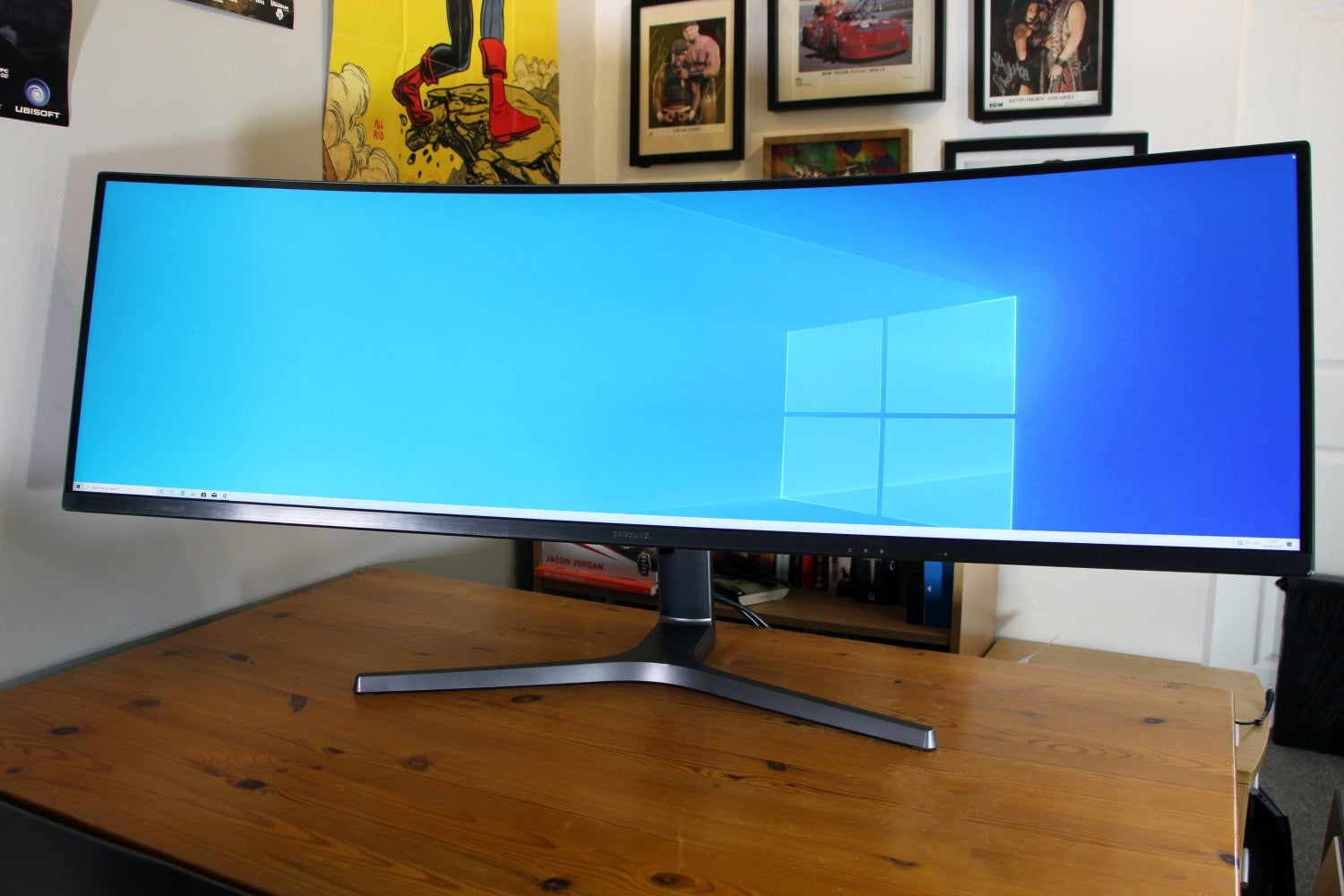
The vast Samsung CRG90 works wonders in racing games thanks to the extra immersion and wider field of view
The width can also boost productivity. It’s great for apps where horizontal real estate is helpful, as the Samsung CRG90 is effectively two 1440p screens without a bezel – and its picture-by-picture modes can force the screen to actually function like this.
The size and aspect ratio do have downsides. Movies in a 21:9 aspect ratio still have black bars down the sides, and certain game UI elements may struggle with that extra width. Some competitive games may also ban this size of screen to avoid players gaining an unfair advantage.
The resolution has its pros and cons, too. Having loads of pixels makes for a sharp experience: the Samsung CRG90 has a density level of 108ppi, which outstrips the Asus XG49VQ with its resolution of 3840 x 1080 and a density level of 81ppi. It means the CRG90 is crisper than its rival – which helps in both gaming and work scenarios. It also means you get more space on screen.
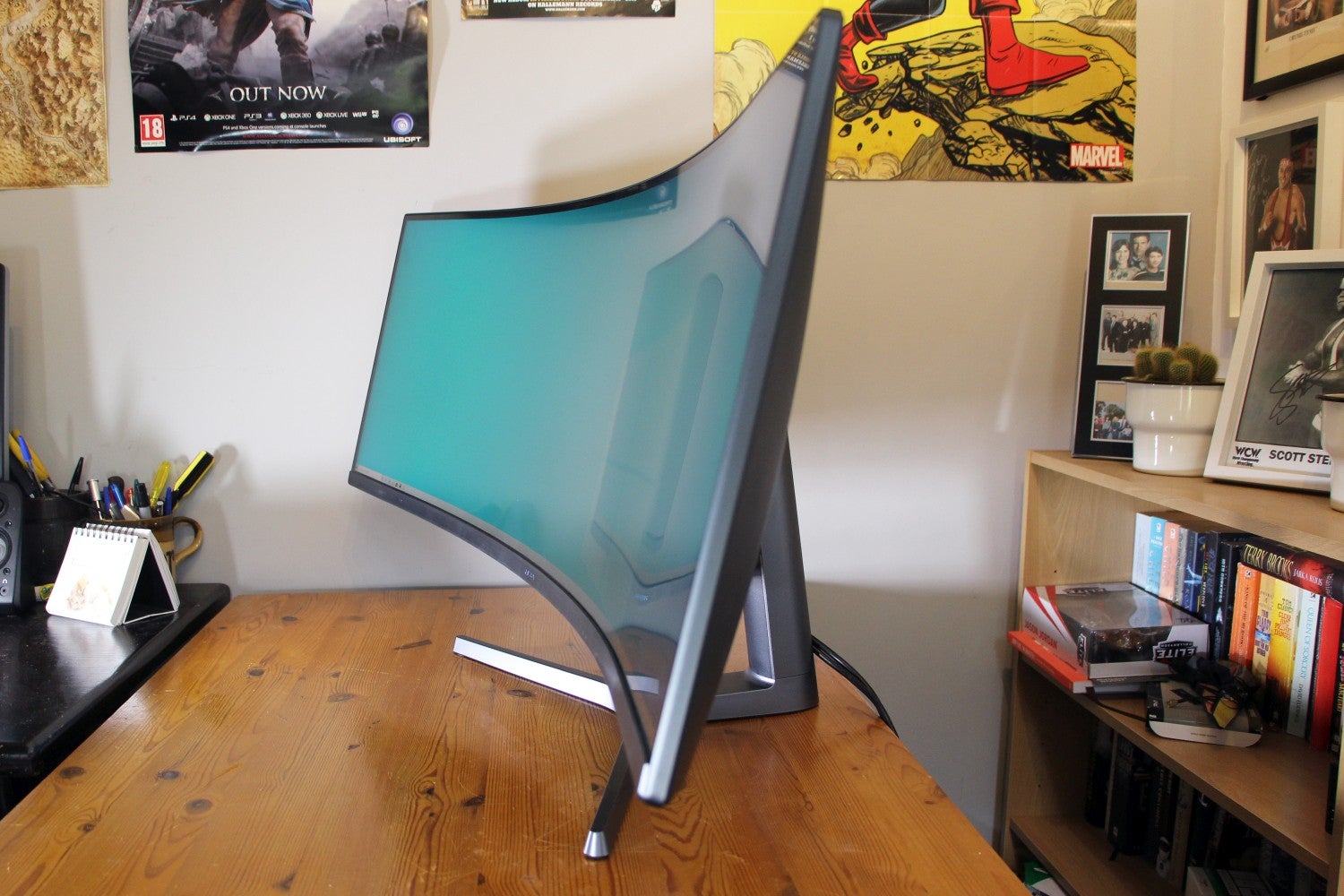
The 1800R curve is standard in the industry now – and it has a side effect of limiting uniformity issues
However, the density level still isn’t able to match 4K screens – a 32-inch 4K panel sits up at 138ppi, and even 40-inch 4K panels serve up 110ppi. 4K screens also have more vertical pixels, and extra vertical space will be more beneficial in some situations.
The Samsung’s huge resolution also means that you’ll need a beefy graphics card for gaming. The CRG90 uses 7.3 million pixels, which is less than 1 million behind a 4K screen and far more than the 4.1 million needed by the Asus. Graphical demands will also increase if you want to use AMD’s FreeSync adaptive sync software.
Related: Best Graphics Cards
Samsung CRG90 – Design and features
One of the CRG90’s biggest advantages is VESA DisplayHDR 1000 certification. This is a top-tier HDR standard that outstrips most of the other consumer monitors on the market, including the Asus.
DisplayHDR 1000 is excellent. It requires a screen to have a 1000 nits peak brightness level, 600 nits burst brightness level and 10 bit colour support, and it demands 90% DCI-P3 gamut coverage. It also demands a 0.1 nit black level.
These are all statistics that Samsung claims to manage. There’s no full-array local dimming, but that’s the only serious HDR omission.
It’s miles better than the DisplayHDR 400 standard seen on the Asus XG49VQ and many other screens: that entry-level protocol only requires brightness levels of 320 nits and 400 nits, and it makes no demands regarding DCI-P3 coverage.
Samsung’s screen is also kitted out with AMD FreeSync 2. Its peak refresh rate of 120Hz is a little lower than the Asus monitor, which tops out at 144Hz, but that makes sense for mainstream gaming – 120Hz is enough to make most games look butter-smooth.
Hardware considerations also play a part: games need to run at frame rates near to the monitor’s refresh rate to make the most of syncing, and hitting 100fps at the Samsung’s resolution is difficult.
If you do want the added slickness of 144Hz, then the Asus XG49VQ may be a better option – especially if you’re willing to drop the resolution to achieve that.
Related: AMD Radeon RX 5700 review
There are some peripheral issues to contend with regarding the Samsung’s implementation of FreeSync and HDR. If you want to use HDR and 10-bit colour, then FreeSync only runs at 100Hz, not 120Hz. If you do want HDR and 120Hz, you’ll have to use 8-bit colour.
This compromise is caused by DisplayPort 1.4 – there’s just not enough bandwidth. It won’t affect the vast majority of users, but it’s something worth mentioning. Similarly, HDR and FreeSync aren’t available in picture-by-picture mode, but that’s a peripheral concern.
Elsewhere, the Samsung CRG90 uses a VA screen, just like the Asus XG49VQ. And, just like the Asus, Samsung’s panel has a 4ms response time – fine for mainstream gaming, but not good enough for esports.
Related: Games of the Year
Samsung CRG90 – OSD and setup
The CRG90 looks excellent, with a smart metallic stand and slim bezels. It’s not as outrageous as the XG49VQ, with its extravagant stand and bigger logos, so it’ll fit in at the office too.
Samsung’s panel is good on a practical level. It’s got 120mm of height adjustment – 2 to 15 degrees of tilt, and 30 degrees of swivel – similar options to the Asus. The CRG90 works with 100mm VESA mounts, and cable-management is handled smartly by the stand. It doesn’t have speakers, but most people paying this much will have their own hardware, or a headset.
The Samsung has two DisplayPort 1.4 connections and a single HDMI 2.0 port. It’s also got pairs of USB 3.0 and 2.0 ports. There’s no USB 3.1 or Type-C, though, and the ports are installed around the rear of the screen so they’re tricky to reach. The Asus only included two USB 3.0 ports.
The CRG90 is tricky to build – an occupational hazard of huge screens. However, the Asus is a little better thanks to its inclusion of tool-free screws. The Samsung wobbles a tad more than the Asus, but it’s not going to be a problem when the 11.6kg CRG90 is anchored on a desk.
The on-screen display is excellent. A clear row of symbols at the top highlights which HDR, refresh rate and response time settings are selected, and the main OSD keeps things slick and well organised. A joystick on the bottom bezel is used to navigate the menu and it’s snappy and responsive.
A smaller sub-menu serves up picture-by-picture and source options, and switching between the three customisable picture modes is easy. The Asus’s OSD is also navigated with a joystick, and its software is similarly responsive and well designed. There’s no separating the two here.
Related: Best headphone amp
Samsung CRG90 – Image quality
The CRG90 pairs its impressive set of features with good image quality. Out of the box, the panel’s Delta E sat at 2.08 – a tad better than the Asus.
The factory colour temperature of 6366K is a tad on the warm side, but close enough to the 6500K ideal to make no difference. It’s a little closer than the Asus, which hit 6825K. The Samsung also provided a solid gamma level of 2.12.
The Samsung delivered good contrast. Its initial brightness level of 385 nits is excellent, and the black level of 0.14 nits is just as good – it means you have loads of high-end punch and plenty of depth. The measured contrast ratio of 2750:1 is great, delivering huge depth and subtlety.
The Samsung’s contrast and colour results remained consistent with the brightness toned down to a more usable 150 nits and with it ramped up to its peak level of 535 nits.
This is one area where the Asus is stronger – at least in conventional screen modes. The XG49VQ delivered a factory brightness level of 499 nits and a black level of 0.11 nits – which meant a factory contrast ratio of 4536:1. That’s a sensational figure and it means that the Asus delivers punchier contrast than the Samsung.
In other screen modes the Asus’s contrast level dropped down to a more conventional 1500:1, though, while the Samsung maintained its levels across more of its screen modes.
The Asus’s vast contrast means that it’s a little bolder and brighter than the Samsung, although it can look a little too intense. Samsung’s panel doesn’t reach those levels, but it still has fantastic contrast – and its better colours mean that its images look a little more realistic. And both screens are superb when placed in the market; when it comes to colours and contrast, they’re better than the vast majority of other gaming panels.
Samsung’s panel maxed out the sRGB colour gamut, so there are no colour issues with games. It covered 89.5% and 82.8% of the DCI-P3 and Adobe RGB gamuts, too. The former figure is fine for HDR and only half a percent behind what DisplayHDR 1000 demands, but the latter is a little low and precludes this screen from the most demanding colour work.
Elsewhere, the Samsung proved inconsistent when using its various screen modes. Its sRGB option is the best: it improved Delta E and colour temperature figures while retaining contrast levels. We’d switch that on and not look back.
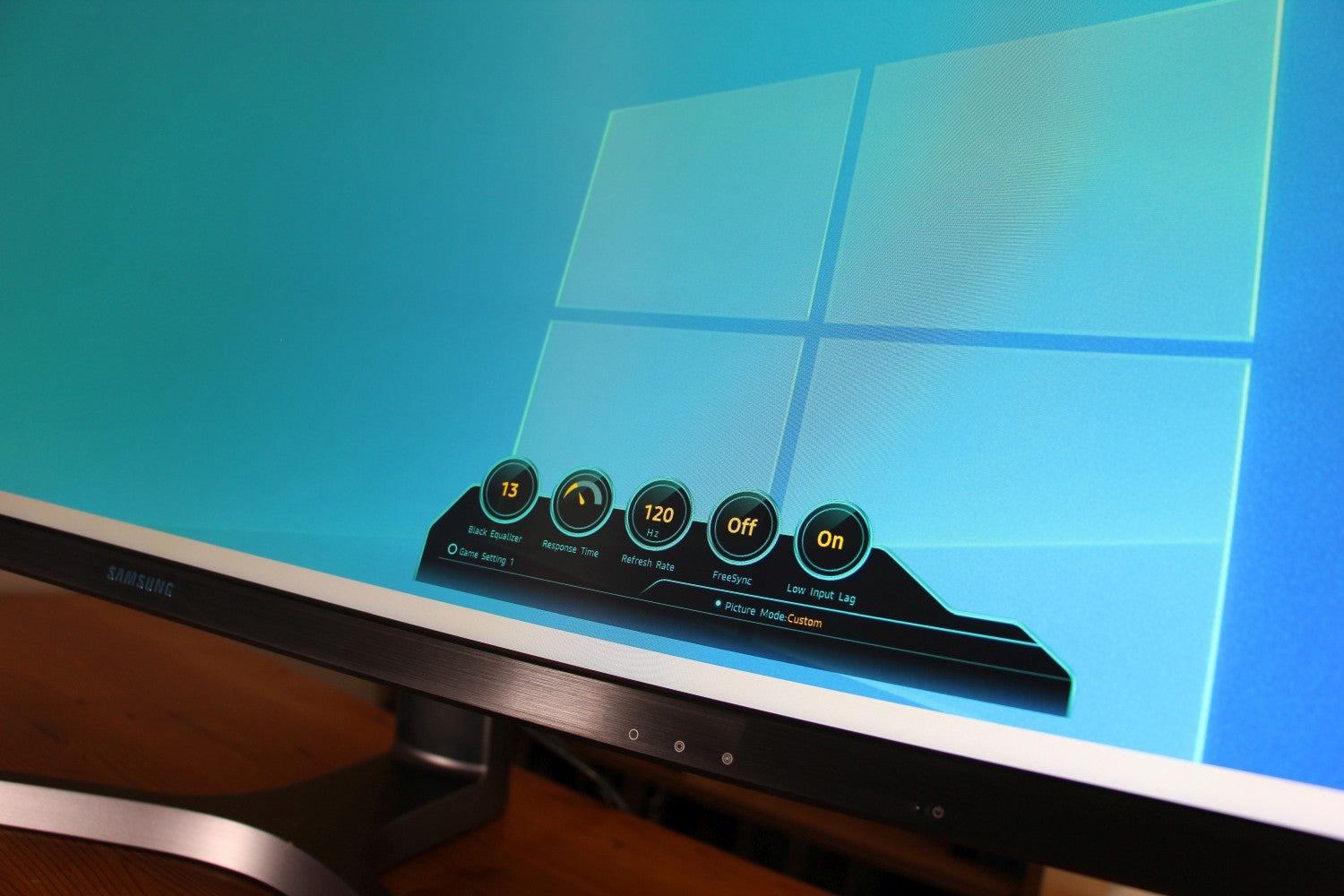
There are three customisable gaming modes and this smaller menu shows which key settings are selected
Elsewhere, the FPS, RTS and MOBA modes made the screen cooler while hampering Delta Es, the RPG mode isn’t much different from factory settings.
The Samsung is excellent when it comes to HDR. The CRG90’s protocols demand a consistent brightness level of 600 nits and a peak of 1000 nits, and this screen can frequently manage that: it got beyond 600 nits in full-screen white tests while sometimes dipping to 592 nits, and it managed to hit burst levels at 1000 nits – although in some areas it did occasionally dip to 958 nits.
Impressively, in some tests the Samsung paired these brightness figures with a black level of just 0.0034 nits, although in most tests the black level was nearer to the 0.1 nits level demanded by DisplayHDR 1000.
The difference between the two screens is clear. Samsung’s panel delivers a significant boost to HDR content: it’s got better contrast, bolder, lighter, brighter highlights and more depth. Heading to HDR on this panel makes a noticeable difference – while using HDR on the Asus makes hardly any difference at all thanks to HDR-mode brightness and contrast levels of around 300 nits and 2350:1.
The Samsung screen’s biggest quality issue was uniformity, which is not a shock considering the size of the panel. In the right-hand corner the brightness deviated by 13%, and Delta E figures deviated in the top-left corner.
When the screen was dark, the right-hand patch of backlight bleed was visible. In lighter conditions, the left-hand Delta deviation saw the slight colour distortion.
However, these issues will just not be visible during gameplay, when the screen is full of motion and colour. Having the brightness reduced to more conventional levels will lessen the impact here, too, and it’s better than the Asus – that panel lost 17% of its backlight strength on the edges and 25% in the corners.
Related: Best multi-room speakers
Should I buy the Samsung CRG90?
The Samsung CRG90 is a stunning screen with few flaws, but it’s expensive and not suitable for everyone.
It has tremendous screen quality, with superb colours, great contrast and an HDR implementation that actually works. The punchy, vibrant images are joined by AMD FreeSync and solid physical design that delivers good adjustment and an effective OSD.
The Asus may have better contrast in some situations, but at this level contrast increases deliver diminishing returns – both are easily good enough. The Asus also has poorer uniformity, disappointing HDR and a lower resolution alongside slightly inferior colour. It’s got a faster FreeSync refresh rate, but that’s about it.
The CRG90 is better in virtually every way, but it does come with caveats. The huge resolution and 120Hz FreeSync rate mean you’ll need a powerful graphics card to run games effectively – if you have a lesser GPU or want a 144Hz panel, the Asus is better.
Remember, the CRG90’s form factor will be great in some gaming and office situations but not effective in others – especially if you want to play competitively or just need more vertical space. This screen also has a huge price, too; it’s around £150/$150 more expensive than the Asus.
However, if you have a the cash and feel like you would benefit from a 32:9 widescreen, the Samsung CRG90 is the best widescreen monitor out there right now, thanks to its image quality, HDR abilities and all-round strong design.
Verdict
The Samsung CRG90 is expensive, and its 32:9 form factor won’t suit everyone – but it justifies its price with consistent excellence. Its image quality is superb, it delivers with good HDR, and it’s got a huge resolution and support for 120Hz AMD FreeSync 2. It’s solid physically, too, and has a slick OSD. Not everyone will need this screen – but, if you do want a super-wide panel, it’s the best option.


